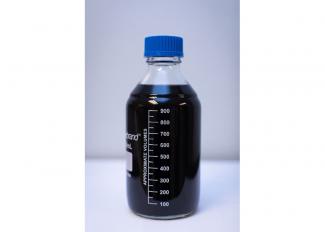For generations, coal powered industries that created new jobs and helped supply light, heat and hot water to homes, hospitals, schools and businesses. But soon, people may associate the nation’s most abundant natural resource with a host of other uses from building materials and energy storage capabilities, to carbon composites and 3D printing materials.
NETL experts are advancing those and other ideas through the Laboratory’s Coal Beneficiation Program and a dynamic new collaborative effort with universities and sister national laboratories known as the Consortium on Coal-based Carbon Materials Manufacturing (COAL MAT).
Beneficiation is a term used to describe the treatment of raw materials like coal to improve physical or chemical properties so it can be used for new applications. Coal Beneficiation at NETL focuses on both enhancing the value of coal as a feedstock and developing new high-value products derived from coal.
NETL’s John Rockey explained that research includes testing of laboratory- and pilot-scale technologies to produce upgraded coal feedstocks and additional revenue-producing products.
“For example, the United States’ coal value chain can be extended by manufacturing carbon products directly from coal instead of using petrochemical or biomass feedstocks or by expanding markets for existing coal products,” he said. “We are working on new approaches so that coal can be used to manufacture high-value carbon products including carbon fiber, carbon additives for cements and structural composites, battery and electrode materials, carbon nanomaterials and composites, plastic composites, and 3D printing materials.”
In addition, world markets for coal as a fuel for power generation and steel making can be expanded by upgrading the properties of raw coal to make it more environmentally attractive by using new approaches like coal dewatering, fine coal leaning, dry-cleaning processes to upgrade lower-rank reserves, chemical treatment and biological processing technologies.
Each of these activities represent beneficiation approaches under development through NETL and its partners. At NETL, coal beneficiation technology development focuses on three primary areas:
- Coal to carbon products research is intended to enable production of cost-competitive, high-value carbon fibers and nanomaterials for use in non-traditional products such as structural materials, 3D printing materials, energy storage and electrode materials and carbon composites.
- Feedstock research is enhancing coal’s value and expanding markets for power generation and steel-making.
- NETL’s work to develop a comprehensive database of coal properties is enabling coal suppliers and power plant operators to estimate the economic impacts of coal properties and compositions on the efficiency, reliability and emissions of existing and new power generation facilities.
In addition to its ongoing beneficiation research, NETL supports the U.S. Department of Energy Office of Fossil Energy’s Advanced Coal Processing Program by supporting the COAL MAT effort – a consortium involving coordinated research and technology development between NETL, the Oak Ridge National Laboratory, the University of Kentucky Center for Applied Energy Research, and Massachusetts Institute of Technology.
NETL’s Christopher Matranga said COAL MAT conducts research to develop high-value products from coal feedstocks and evaluate how these products impact coal and manufacturing markets through three major research activities:
- Development and characterization of coal-based manufacturing technologies. This activity includes research on the production of coal-based carbon fiber and composites containing these fibers.
- Discovery and deployment of new materials and consumer products manufactured from coal and coal byproducts. This activity focuses largely on the production of affordable carbon nanomaterials (graphene) from coal and incorporating them into building materials (concrete/asphalt), miniaturized carbon electronics, and water filtration materials.
- Characterization and analysis of how coal-based manufacturing technologies impact carbon product markets, as well as existing coal markets. This activity evaluates which markets and products coal feedstocks will have the largest impact on and the economic drivers and challenges associated with bringing these products to market.
Matranga said COAL MAT’s goals are to quantify the potential size and impact of a coal-based manufacturing industry; identify technical, cost, and environmental barriers associated with using coal as a manufacturing feedstock; and identify, develop, and deploy technologies that use coal as a manufacturing feedstock for novel materials and consumer products.




